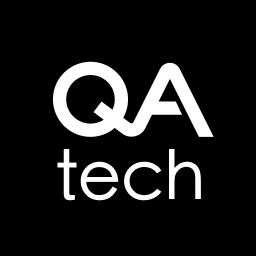Running a successful business gets harder by the day as new products and technology stiffen the competition. Staying ahead of the curve requires innovation and efficient use of the latest technology. B2B companies, in particular, need to continuously explore opportunities to streamline their software development processes and ramp up performance. This is where generative AI comes into play.
Generative AI in software development can transform the way B2B companies design and build applications. These systems use advanced algorithms and machine learning techniques to automate the code writing, find bugs, and improve software performance.
Read on to learn more about the advantages of generative AI in software development. We will discuss its potential applications and challenges and show you how to use it the right way.
Measuring Developers’ Productivity without GenAI
Studies have found that Generative AI can reduce the time it takes to write code by 35 to 45 percent.
Companies measure developers’ productivity to track the progress of projects and make sure that they are completed within the given time and budget. Measuring productivity also helps IT leaders discover where developers are struggling and provide the necessary support and resources to improve.
But how do we track the developers’ efficiency? Metrics is the way to go.
Key Metrics to Consider in Measuring Developers’ Productivity
Here are a few key metrics to consider when measuring developer productivity:
1. Task
A common way to quantify developers’ tasks is the number of lines of code written per day. Entry-level developers will probably write about 100 lines of code a day, while seniors average 20 lines. This parameter can be tricky, though. You may think that writing more code means more productivity. Well, not necessarily. While it’s true that developers need to write code to get things done, the quality and complexity of that code are what matters.
Measuring code quality without the help of generative AI requires extra layers of quality assurance (QA), such as cyclomatic complexity. This process measures code complexity by counting the number of decision paths through it. Similarly, to assess the stability of your codebase, you need to track your code churn.
2. Time
Time is another KPI used to measure developers’ productivity. When you know how much time developers spend on coding, debugging, or testing, you’ll know what areas they’re good at and where improvement is required. One common method developers use to track time in software development is time-tracking software.
Some developers use project management tools with built-in time-tracking features. While these tools sound cool, they may not be reliable enough compared to AI-powered time tracking. The main reason for this is that manual logging and self-reporting can be inaccurate and may not capture the full scope of a programmer’s work.
3. Teams
Software development projects often involve teams working remotely or across different time zones. The level of collective teamwork plays a vital role in developers’ productivity. While traditional collaboration tracking systems are helpful for seamless collaboration, they may fall short of accurately measuring individual contributions.
This gap is always seen in complex and iterative projects. For example, the time-tracking feature of collaborative tools may not fully capture contributions from team members and reflect them in their records.
11 Advantages of Generative AI in Software Development
Generative AI is transforming software development in the following ways:
1. Automatic Code Generation
One of the main advantages of generative AI in software development is its ability to automate the tedious task of writing code. In traditional software development, developers spend countless hours writing lines of code, a process that is time-consuming and prone to mistakes.
However, with generative AI, developers can simply input the necessary information and let the AI algorithm automatically generate the code. This approach consistently produces more accurate code, and the reason behind this is clear.
The AI algorithms are trained on extensive amounts of data, enabling them to learn patterns and best practices from existing codebases. This allows them to generate code that follows industry standards and best practices.
2. Predictive Analytics
Before GenAI, software developers had to spend a significant amount of time manually sorting through large datasets to find patterns and make predictions. Again, this approach is flawed because it is time-consuming and prone to human error.
Generative AI makes it possible for developers to input extensive datasets and let the algorithm handle the analysis using predictive analysis. The AI system can quickly process the data and generate precise predictions, saving developers time and effort. As the system continues to receive inputs and make predictions, the AI constantly refines its algorithms and improves its accuracy over time.
3. Automated Testing
One of the key advantages of generative AI in software development is its ability to automate the testing process. AI software testing tools like QA.tech can help developers generate test cases autonomously. In other words, these tests run with minimal human intervention. So developers can focus their time and energy on other aspects of the project.
Human mistakes are always a concern in manual testing. However, with AI in testing, the risk of human error is reduced significantly. Since the generative AI algorithms are programmed to follow predefined rules and criteria, test cases are executed consistently and accurately.
4. Product Development Strategy
Generative AI is also useful for creating detailed plans guiding product teams through software development. One way it does this is by analyzing vast amounts of data. Using machine learning algorithms, generative AI can process extensive datasets from previous software development projects and user feedback.
With this insight, product teams can make wise decisions when creating their plans. New project plans will be built based on past successes and failures. Generative AI also helps fine-tune product development strategies by mimicking different scenarios to identify potential problems.
5. Rapid Prototyping
Generative AI uses advanced algorithms and machine learning techniques to create multiple design choices based on a set of predefined parameters. Product designers can now simply input requirements like performance needs and material limitations. Once these settings are provided, the AI system proceeds to generate design concepts that meet these criteria.
Lalaland is a classic real-world example of generative AI in product development. This application innovates product creation for the fashion industry by eliminating the need for physical samples. Users can select various body sizes, hairstyles, and custom poses to generate the final design.
6. Bug Detection and Resolution
Generative AI also helps to detect and fix bugs. It scans code bases to locate any irregularities that may signal the presence of bugs or errors. If it finds a flaw in the code, it will immediately alert developers to carry out further investigation.
Additionally, generative AI helps in root cause analysis. This is a procedure that examines code dependencies, version control records, and relevant data to uncover the root causes of bugs. It also extends its support to code refactoring, proposing optimized code structures to address inefficiencies and potential sources of bugs, thereby contributing to the prevention of similar issues in the future.
7. Continuous Integration and Deployment (CI/CD)
Generative AI enables software developers to improve CI/CD processes through automation. For instance, automatic code generators can create new pieces of code from scratch, and developers can leverage auto-completion tools to accelerate the coding process.
Test automation is another area in which generative AI enhances CI/CD. Using AI-powered frameworks, developers can thoroughly test software applications. It also speeds up the generation of deployment configurations and infrastructure.
8. Product Architecture Design
Product architecture design has gotten so much better since developers started using AI tools to conceptualize and iterate architectural blueprints. The algorithm that performs this function explores a broad combination of design possibilities, even those the designer didn’t consider.
Adobe Firefly is a popular example of generative AI in product architecture design. This software is part of the Adobe Creative Cloud suite. It uses generative machine-learning models to create different kinds of designs, whether it’s a futuristic skyscraper or a temporary community installation.
9. Code Review
Through the use of machine learning algorithms and NLP models, generative AI can help developers find bugs, security loopholes, and regulatory violations. NLP models are trained on large data sets to identify error patterns in code and provide recommendations to developers based on the given context.
QA.tech is one powerful AI tool that excels in this area. Maximilian Schn, the CTO of Solkoll.se, expressed his satisfaction with this feature when he said:
“The fact that QA.tech acts more like a human and reasons about the UI offers more relevant feedback than having a robot instantly press a button that you told it to press.”
Maximilian Schõn, CTO of Solkoll.se
10. Data Generation for Testing
Did you know that Amazon’s Alexa AI team uses synthetic data to complete the training data of its natural language understanding (NLU) system? This is a clear demonstration of using AI to generate data for testing. This approach is highly recommended when training models without sufficient existing customer communication data.
Waymo is another company that capitalizes on this AI advantage. The Waymo team uses generative AI to create realistic driving datasets from synthetic data. These datasets are used to train its self-driving vehicle systems.
11. Enhanced Collaboration
Another advantage of using generative AI in product development is its ability to bring teams together. AI-powered collaboration tools enable developers to easily delegate tasks and share thoughts with colleagues and stakeholders, no matter where they are located.
This interconnected environment encourages efficient communication and accelerates production timelines. When team members can share and receive real-time feedback, you can expect smoother product development workflows.
Additionally, collaboration tracking systems powered by generative AI can offer advanced capabilities such as instant code contribution analysis and automatic tracking of collaborative efforts. These extended features precisely record each programmer’s influence on the project.
What Are the Challenges with Adopting Generative AI in Software Development
Implementing generative AI in software development can be daunting. Here are some challenges you’ll most likely encounter:
1. Data Quality and Quantity
Generative AI models require large volumes of high-quality datasets for training. It can be challenging to find and organize this data, especially for companies that don’t have access to diverse and extensive data sources.
2. Ethical and Legal Considerations
Using generative AI comes with ethical worries about privacy, intellectual property, and how the content it creates might be misused. Companies developing software need to be cautious about these concerns and ensure they don’t cross any ethical lines.
3. Resource Intensiveness
Generative AI models require heavy computational power and infrastructure. This means a lot of money on electricity bills and tools, whether hardware or software. In that case, small and medium-sized companies may not be able to take advantage of generative AI.
4. Algorithmic Bias and Fairness
Generative AI models can inherit biases present in the training data. These biases can arise from societal prejudices, cultural norms, and historical inequalities embedded in the data. For instance, biases in image generation training data may result in certain demographic groups being either underrepresented or misrepresented.
Conclusion
With the advancements in Al technology, we now have tools that can generate code automatically and check them for defects. Imagine being able to generate chunks of code with just a few clicks. You’ll end up saving hours of manual coding and build high-quality software quickly.
Take advantage of automated quality assurance capabilities to improve your software process. QA.tech offers the best-in-class automation features that will speed up your quality assurance workflows.



